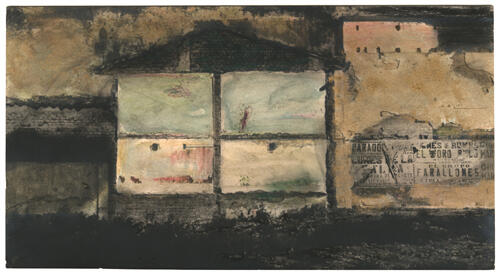Fernell Franco
Museo Nacional de Colombia, Bogota
Photography in Colombia began to receive recognition only when Fernell Franco (1942-2006) obtained the top prize in his category at the 26th National Salon of Visual Arts in 1976, with his photo Interior. This exhibition, held in the framework of the series of Homenajes Nacionales (National Tributes) at the Colombia National Museum is, rather than a tribute, a sensitive exploration into the lens of the artist from Cali, concerned with the experimental processes that include the photographic process.

Among the works, a significant number of pieces from the archives of Fundación Fernell Franco, many of them exhibited for the first time, could be found. These images permitted a reformulation of the artist’s work, in which experimentation and the continuous artistic exploration of the photographic support significantly configured his artistic proposal. It was thus possible to understand that his interest in portraying Cali and its architectonic decadence as of the 1970s –which caused the disappearance of sites of important historical and cultural value, was the same interest that he had in manipulating the photographic processes in the same way as the city had suffered its decay. The curatorship was divided in two parts: Processes and Sketches. The first part intended to explore the “problems of spatialization and the narrative quality of time in the photographic environment”, using the processes of photomontage, masking or framing through which the artist creates “sequences”; using the processes of illumination and manipulation, thus approaching his production to pictorial problems; and the processes of transformation, in which the systematic process of destruction of the photographic support is presented as a metaphor for the city’s degradation.
The second part, dedicated to Sketches, contained the series Estadio, Trébol, y Sol (Stadium, Clover and Sun), structured entirely in the intimacy of his studio, which illustrated the development of his research aimed at reflecting the temporal quality of photography, as well as of exploring the chances of transforming an image on different types of support and their potential meanings. Una impecable soledad (An impeccable solitude) turns out to be an approach to one of the artists with greater sensitivity, who through the restricted two-dimensional character of photography manages to convey a strong social message.
-
 Untitled, from the series “Demoliciones”. Photography in black and white, handpainted / Courtesy: Fernell Franco Foundation. Sin título, de la serie “Demoliciones”. Fotografía en blanco y negro pintada a mano / Cortesía: Fundación Fernell Franco.
Untitled, from the series “Demoliciones”. Photography in black and white, handpainted / Courtesy: Fernell Franco Foundation. Sin título, de la serie “Demoliciones”. Fotografía en blanco y negro pintada a mano / Cortesía: Fundación Fernell Franco.




